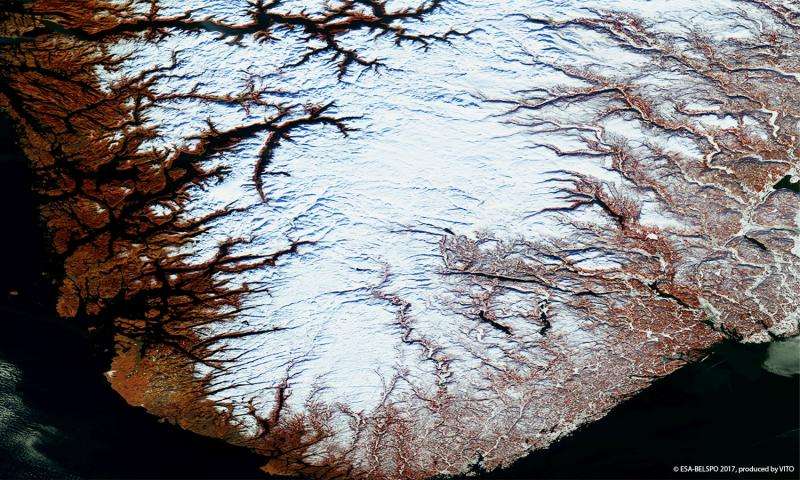Credit: ESA/Belspo – produced by VITO
Snow-dusted Norwegian fjords imaged by ESA's Earth-observing Proba-V minisatellite.
Norway's coastline is one of the world's longest – with a total length recently calculated at 80 000–100 000 km – owing to its famous fjords, narrow inlets bordered by steep cliffs created by glacial erosion during previous Ice Ages.
After these glaciers melted and Earth's crust rebounded, seawater flooded the valleys, leading to some fjords becoming very deep: the Sognefjord fjord (visible to the upper left) is 1300 m. From bottom to top the Bokna and Hardanger fjords are also seen. The white region in the middle is the Hardangervidda National Park, an extensive plateau at around 1200 m altitude, inhabited by wild reindeer.
Launched on 7 May 2013, Proba-V is a miniaturised ESA satellite tasked with a full-scale mission: to map land cover and vegetation growth across the entire planet every two days.
Its main camera's continent-spanning 2250 km swath width collects light in the blue, red, near-infrared and mid-infrared wavebands at 300 m resolution and down to 100 m resolution in its central field of view.
VITO Remote Sensing in Belgium processes and then distributes Proba-V data to users worldwide. An online image gallery highlights some of the mission's most striking images so far, including views of storms, fires and deforestation.
Provided by European Space Agency
























